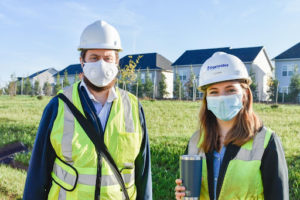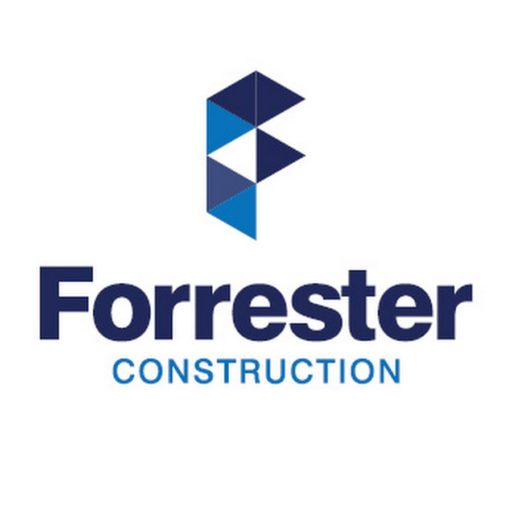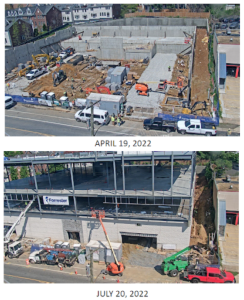What are the 5 biggest current trends in commercial construction? Commercial construction continues to be an extremely important industry worldwide, especially as cities and towns look to expand and revitalize.
Not only are communities looking for ways to increase housing and other amenities, they are also recovering from and reacting to the impact of the COVID-19 pandemic. The pandemic and safety precautions, changes in where people prefer to live and work, and more have greatly influenced the biggest trends in construction this year. These are some of the biggest trends expected to impact the construction industry throughout the remainder of this year.
Top Trends In Commercial Construction
Urgent Need for Workers
Even before the COVID-19 pandemic, the construction industry, general contractors and trades in particular, saw a huge need for more workers. In early 2022, industries across the business world began experiencing a high number of resignations, leaving them understaffed and in need of more help.
The construction industry is experiencing this shortage now more than ever. They need:
- Project Managers
- Superintendents
- Project Engineers
- Laborers of all trades
These positions are highly sought after, especially as the demand for new construction, renovation, and repositioning continues to increase.
Many subcontractors will offer apprenticeships and training to professionals looking to enter the industry to give them the experience they need to be successful on the job. Many companies have increased wages to ensure they can find qualified workers and are providing sign-on bonuses for new workers.
Issues In Supply and Demand
When the COVID-19 pandemic first began, a priority around the world was to reduce the spread of the virus as much as possible. This led to countless industries and businesses shutting down until it was deemed safe to have in-person workers again. As a result, like countless other industries, construction has faced long lead times and a shortage of materials required to complete projects.
The decreased availability of these materials, coupled with associated rising costs, has made it difficult for projects to remain on track in both schedule and budget. The supply chain crisis is beginning to improve, but project teams are still struggling to find the materials necessary to complete their projects. The issues in supply and demand continue to have a major impact on the construction industry.
Embracing the Use of Technology Is A Big Trend in Commercial Construction
Like most other industries, the construction industry has seen significant changes due to the evolution of technology. Technology is being used and embraced now more than ever in the construction industry.
From the use of drones or live streaming cameras, used to examine a worksite or document progress, to utilizing applications to track safety or issues in the field, technology is helping construction companies be more efficient and effective than ever.
Construction companies and professionals should spend time learning about important technology, software, and tools to determine whether they would be helpful for their projects. New technologies, such as mobile apps and handheld platforms, have the potential to greatly streamline ongoing and future projects. Without updated technology, construction companies can risk falling behind and becoming less relevant than their competitors.
Increased Focus on Sustainability
Sustainability in construction has also grown significantly over the last few years, and the demand for green building designs and practices only continues to grow. As the world struggles with the impact of climate change, communities are looking at new, innovative ways to build and renovate more sustainably. A standard in sustainability is LEED, originally established in the early 90s to rate green buildings, which is a certification that evolved via the US Green Building Council.

LEED is intended to help transform buildings to be healthier for people and the environment from design and construction. In addition to having a smaller negative impact on the environment, operating a LEED building can be very cost-efficient, saving money on energy, water, maintenance, and waste. Many construction companies encourage their operations team members to obtain a LEED credential, emphasizing their proficiency in the latest sustainable design, construction, and operations standards.
Though most projects are designed with sustainability in mind before construction begins, LEED accredited builders are experienced in renewable energy systems, green building materials and finishes, stormwater management, and the processes required throughout the construction project to become a LEED accredited building of any level.
Increased Focus on Protective Equipment
When the COVID-19 pandemic started in 2020, communities around the world scrambled to secure effective protective equipment to help reduce its spread. While many industries were implementing the need for protective equipment for the first time, it reinforced its significance in the construction industry. Construction already had a major focus on protective equipment, as workers need to be protected from potentially harmful materials, such as airborne fumes and particles, machines, tools, and other hazards.
The COVID-19 pandemic reinforced and reinvigorated the use of protective equipment, especially face masks, gloves, and other items that prevented the spread of airborne diseases. As most construction continued through the pandemic and the majority of workers needed to be on-site to complete these projects, it was imperative that companies adjusted to keep sites as safe as possible by:
- Installing ample handwashing stations
- Hand sanitizing dispensers
- Making sure that PPE, like masks, were readily available
- And more.
These COVID 19 safety precautions paired with the consistent use of PPE for construction hazards remain an important part of the construction industry, especially while COVID-19 is still a present and active part of society.
Conclusion
While these trends keep impacting the construction industry, the need for new construction will continue to increase. Contact Forrester Construction Company when looking for a business that incorporates the latest trends in commercial construction.
Want to learn more basic construction knowledge? Check out our other blog posts!


